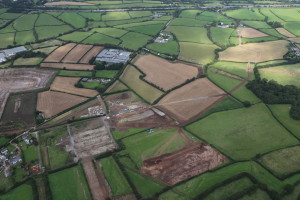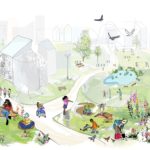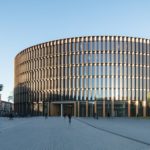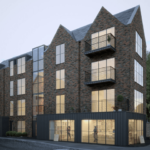News - Construction News
Sherford, leading the revolution in sustainable development
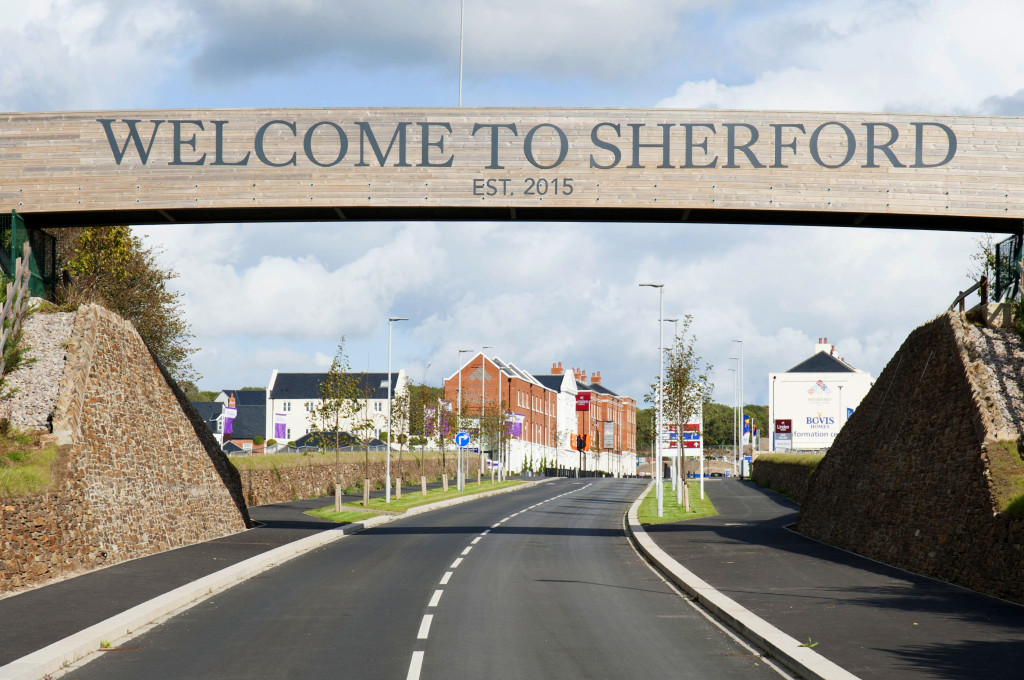
Having spent over two decades in planning, and located in one of Devon’s most picturesque areas, Sherford is set to be a revolutionary £1Bn community, eventually home to over 12,000 people. Its development is being led by the Sherford Consortium, a network of national, award-winning homebuilders, which includes Bovis Homes, Linden Homes and Taylor Wimpey.
More than just a new housing development, Sherford is set to have its own unique way of life, run by its residents, for its residents. It will be a town which integrates into and enhances the surrounding environment, while also providing all the amenities needed to support a modern new community including 5,500 high-quality homes, over 80,000sq m of retail space, three primary schools and a secondary school, as well as a 500-acre community park. It will also provide a range of community facilities including a leisure centre, town hall, health centre, library and youth centre.
Sustainability has always been at the heart of the project, and its development has advanced through close consultation and collaboration with the public, local authorities and professionals, all of whom worked together to help shape the vision of Sherford. Creating a sustainable, high-quality, inclusive and diverse community has been a key driver of the project, not only to support the economic growth of the local area, but also to ensure that it will be one of the most environmentally friendly areas in the South West.
The shared objective has been to create a community which not only respects and enhances the surrounding environment and its diverse wildlife, but also enables and supports sustainable methods of construction. The first residents are already benefiting from sustainable ways of living, including significantly reduced energy supply requirements and energy-efficient homes.
To date, the Sherford Consortium has invested more than £1.6M towards eco-friendly initiatives onsite, so far. Although still in the first phase of development, as part of their commitment to sustainable building and construction practices and initiatives at every level, the Sherford Consortium is working with the local environment during each development phase. This includes looking in detail at the topography and geology of the land, and implementing systems which support the natural landscape, such as sustainable urban drainage systems, wildlife corridors and greenways, while also ensuring residents have access to ample amounts of green space and outdoor areas.
Sustainable community infrastructure
Sherford was progressed to meet not only the needs of the local housing market, but also the demand for sustainable communities on a national scale. Sherford has been planned and designed to support social cohesion by offering a high quality of life, while making best use of natural resources and the local landscape.
It provides everything needed to support a sustainable community infrastructure, providing a range of high-quality homes and access to jobs and services, as well as offering connections to extensive open and green outdoor space, helping to encourage healthy, active lifestyles.
Work has also begun on the town’s first outdoor spaces and facilities, including multi-use games areas, sports pitches and tennis courts, as well as play areas and allotments – all of which will be available within walking distance of Sherford homes. Additionally, the town is designed to reduce car use, with the inclusion of cycle, pedestrian and public transport links throughout the community.
Developing the Masterplan
The original Sherford Masterplan was developed over two decades ago. Following an extensive review process in 2017, it was determined that some changes were necessary to enable Sherford to become more sustainable and to make it easier to integrate innovative technologies across the site.
For example, the amended Masterplan includes more effective solutions for dealing with surface water. A new sustainable drainage solution is proposed, which will see the layout of the town alter to bring spacious green fingers of land up through the site, including residential areas, which will act as natural drainage zones. Within the first phase of construction, 3.5 miles of sustainable drainage systems have also already been placed, which mimic nature in the way that rainwater is managed.
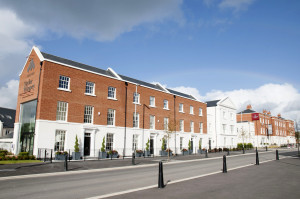
New wildlife habitats have also been created across the town, which includes the construction of extensive wildlife corridors. These form a network of green spaces connected across the site, enabling wildlife to thrive, while encouraging biodiversity. Additionally, 2.3km of existing hedgerows have been carefully transplanted to save important seed banks.
An impressive 400m long vertical planted wall has also been constructed at the main entrance to Sherford. This has been planted with over 30,000 plants, including climbing daisies, ivies, gorse and ferns that have been transplanted from the existing site during construction.
Sherford’s sustainability credentials have already been embraced by residents, businesses, contractors and the public. Its development will bring considerable new business and commercial opportunities to the area, injecting £2Bn into the local economy, with approximately 5,000 jobs expected to become available within the new town’s shops and businesses.
Materials procurement is also monitored for sustainability, and wherever possible, materials are sourced from South West suppliers – supporting the local economy and business landscape.
Holistic approach
The commitment to sustainability is holistic, extending to the Sherford workforce as well, with a revolutionary new £370,000 Skills Training Centre currently being constructed onsite. Designed to help address the skills challenge on a local and national level, the training centre will engage military veterans, apprentices and local contractors, as well as those currently working at Sherford, boosting manual skills by providing training and experience across a number of major construction trades.
As well as winning funding from the CITB, the development of the training centre is being part-funded by the Sherford Consortium and will be delivered alongside partners, including leading local training groups and education providers.
The training centre will include two classrooms, a workshop and an outdoor training area, providing participants with the unique opportunity to learn and train on a large-scale construction site. By identifying gaps in the local trades market and following analysis of the skills most required at Sherford, the centre will focus on providing training initially across five key areas: bricklaying, traditional roofing, specialist carpentry, drylining and sealants.
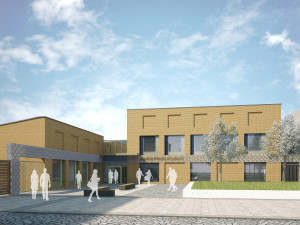
Developing Technology
By revisiting the town’s Masterplan, the Sherford design team has ensured that the project continues to integrate and implement modern construction technologies. This includes using new sustainable drainage systems, helping to ensure the town can manage surface water effectively, and make better use of the natural resources available onsite.
Sherford is set to be a revolutionary new community, and it is vital that the town integrates into and supports the surrounding area, communities and residents – their engagement and support is essential in helping to ensure Sherford is a success. From its conception to construction, the local surrounding communities have been consulted throughout the duration of the project, and this will only continue as construction progresses.
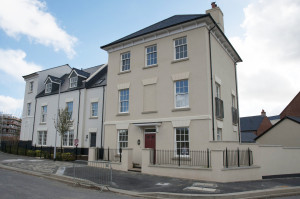
A sustainable future
Sustainability is the future of construction, driven by consumer demand. Today, people want to live in energy-efficient, eco-friendly homes which work with, not against, the surrounding environment. Creating a community which embraces sustainability on every level is not only an attractive selling point but is also ensures that Sherford meets the needs of its residents both now and in the future.
By embracing sustainability, Sherford will not only be a prosperous new community, but will also safeguard the surrounding environment by integrating it into town life, protecting and encouraging local wildlife to thrive alongside residents.
By putting the tools and resources in place to support a sustainable construction workforce, Sherford is taking a significant step in helping to address the national skills challenge, providing contractors, veterans and the unemployed with the opportunity to learn the skills and trades which continue to be in high demand across the UK.
Despite this being the only the first phase of the 20-year project, Sherford’s sustainability credentials have already been recognised. The project recently won an award from sustainability assessment scheme, CEEQUAL, as well as being shortlisted in the RICS Awards South West.
BIM
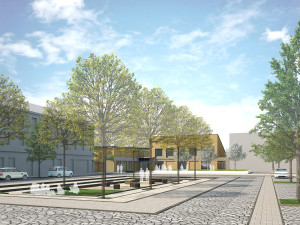
Using modelling technologies such as BIM is a vital part of design developments within the industry, enabling greater collaboration at every level. By offering evaluation and analysis tools, ecosystems can be compared easily before implementation, allowing for more efficient design decisions to be made at earlier project stages.
With obvious advantages such as greater predictability, efficiency and long-term cost savings, BIM adoption is only likely to increase directly alongside eco-construction technology, helping to guarantee long-term performance and future-proof schemes.
If you would like to read more articles like this then please click here.
Related Articles
More News
- New National Housing Bank
4 Jul 25
Hundreds of thousands of extra homes will be delivered thanks to a bold new government-backed
- Homes England acquires Ripon Barracks from MOD
3 Jul 25
Homes England has acquired land at Ripon Barracks which will be developed into 1,300 new
- University joins forces to address critical construction and housebuilding skills gap
2 Jul 25
The University of Salford is collaborating with Cube Thinking to support Barratt Homes in bridging the shift in skills requirements.
